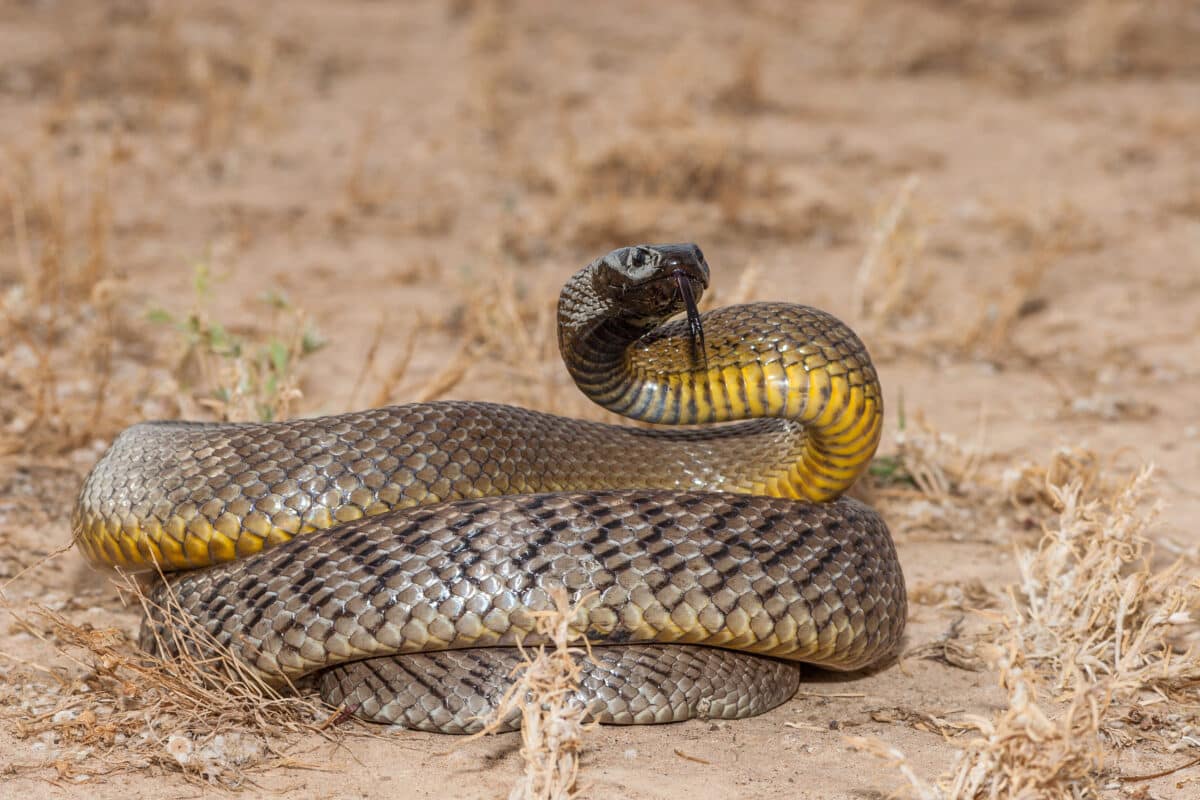Introduction
When it comes to the remarkable globe of snakes, couple of types catch the creativity quite like the baby tiger snake. Recognized for their distinctive coloration and potent venom, these serpents are an integral part of Australia's special ecosystem. In this comprehensive post, we will delve into various facets of infant tiger serpents, including their habits, environment, and exactly how to securely connect with them. Whether you're a wildlife lover or merely curious about these animals, recognizing baby tiger serpents can assist foster a deeper appreciation for nature.
Baby Tiger Snakes: What You Required to Find Out About Their Behavior and Habitat
What Are Child Tiger Snakes?
Baby tiger snakes are juvenile forms of the extremely venomous species recognized medically as Notechis scutatus These snakes are primarily found in seaside regions of Australia, specifically in Tasmania and southern Victoria. Venom extraction and antivenom production in Australia As they expand, their coloration adjustments from an extra muted palette to the particular yellow and black bands that provide their name.

One remarkable aspect of baby tiger serpents is their size; hatchlings normally gauge around 25-30 centimeters in length. Despite their tiny stature, they possess an unexpected amount of poison that can be damaging to people if bitten.

Physical Characteristics
Tiger snakes have numerous vital physical traits:
- Coloration: The distinct banding pattern often ends up being a lot more noticable as they mature. Size: Adults can reach lengths of as much as 2 meters. Body Shape: They have a robust body that helps in swimming and terrestrial movement.
Where Do Baby Tiger Snakes Live? Understanding Their Habitat
Understanding the environment choices of baby tiger snakes is important for both conservation efforts and public security. These snakes prosper in various environments:

- Wetlands: Marshes and swamps provide adequate hunting grounds. Coastal Regions: Commonly found near coastlines where they can search for prey. Woodlands: Thick plant life uses cover from predators.
Geographical Distribution
Tiger serpents are mainly discovered along Australia's southerly coast, including:
- Tasmania: Home to one of one of the most notorious populations. Victoria: Specifically in areas near water bodies.
Are Tiger Snakes Venomous? A Deep Dive into Their Venom
One usual question develops when reviewing baby tiger serpents: "Are tiger snakes venomous?" Rehabilitation Post-Bite The answer is an unquestionable yes!
Venom Composition
The poison of tiger snakes contains neurotoxins that can create paralysis, coagulopathy (blood clotting concerns), and potentially fatality if untreated. Here's what you require to recognize:
- Effects on Humans: A bite from a tiger snake can cause signs like swelling, pain at the bite website, nausea, and also breathing failure.
Comparison with Various other Poisonous Snakes
In comparison to various other Australian snakes such as the eastern brownish serpent or king brownish snake, tiger serpent venom is considered among the most potent. However, deaths are unusual because of improved medical treatments and access to antivenom.
Behavioral Patterns of Infant Tiger Snakes
Understanding exactly how baby tiger serpents behave is crucial for those who stay in or see areas where these reptiles are prevalent.
Nocturnal Habits
Most infant tiger serpents exhibit nighttime behavior. They often tend to forage for food during cooler night temperature levels. This flexibility helps them prevent predators while improving their searching efficiency.
Hunting Techniques
Their searching methods consist of:
- Ambush Predation: Waiting still up until prey comes close. Active Foraging: Proactively moving via plants or along waterways searching for food.
First Aid for Snake Bites: What You Need to Know
Despite being remarkable creatures, encounters with infant tiger snakes can cause harmful circumstances if bites happen. Recognizing first aid treatments can conserve lives.
Immediate Steps After a Bite
Remain tranquility; panic boosts heart rate. Immobilize the influenced arm or leg using a splint or bandage. Seek prompt medical focus-- antivenom may be necessary.Creating a Snake Bite First Aid Kit
A well-prepared first aid set should include:
|Item|Objective|| ------------------------------|--------------------------------------|| Compression plaster|To paralyze the arm or leg|| Splint|Supports damaged bones or joints|| Antihistamines|Reduces allergies|| Emergency get in touch with numbers|Quick access throughout emergencies|
Common Myths About Tiger Snakes Debunked
Many myths border these interesting reptiles; let's clarify some misunderstandings generally held by people.
Myth # 1: All Tiger Snakes Are Aggressive
While some people might show protective habits when endangered, not all tiger snakes display aggressiveness towards humans unless provoked.
Myth # 2: Baby Tiger Snakes Are Much Less Harmful Than Adults
This misconception might not be even more from the reality! Infant tiger serpents consist of almost as much poison as grownups about their dimension; hence they position considerable threats if bitten.
FAQs About Child Tiger Snakes
What do baby tiger snakes eat?- They mostly consume small animals, birds, frogs, and fish.
- Look for slender bodies with faint banding patterns that end up being extra noticable as they mature.
- Yes! Birds of target and larger reptiles may target them.
- Typically every couple of weeks as they proliferate throughout their early life stages.
- While some individuals do maintain them illegally without authorizations as a result of their harmful nature; it's normally not advised given their venomous status.
- With punctual medical treatment-- including antivenom-- the survival price is high!
Conclusion
In recap, recognizing child tiger snakes-- what they eat, where they live, just how they behave-- can furnish us with valuable knowledge regarding these impressive yet harmful animals. The importance of education surrounding first aid actions can not be overstated; knowing exactly how to react effectively after a bite could save lives while fostering regard for our crawling neighbors within Australia's abundant biodiversity range.
By valuing these snakes' roles within environments-- and recognizing possible hazards-- we advertise coexistence rather than fear-based reactions towards one another's existence http://elliotxefn711.cavandoragh.org/avoiding-snake-bites-in-australia-tips-for-safe-outdoor-activities in nature's grand tapestry! Whether you're a devoted walker considering your next adventure or simply curious concerning regional wildlife encounters near home-- this overview works as your trusted recommendation factor on the enigmatic globe occupied by our close friends-- the amazing baby tiger snake!